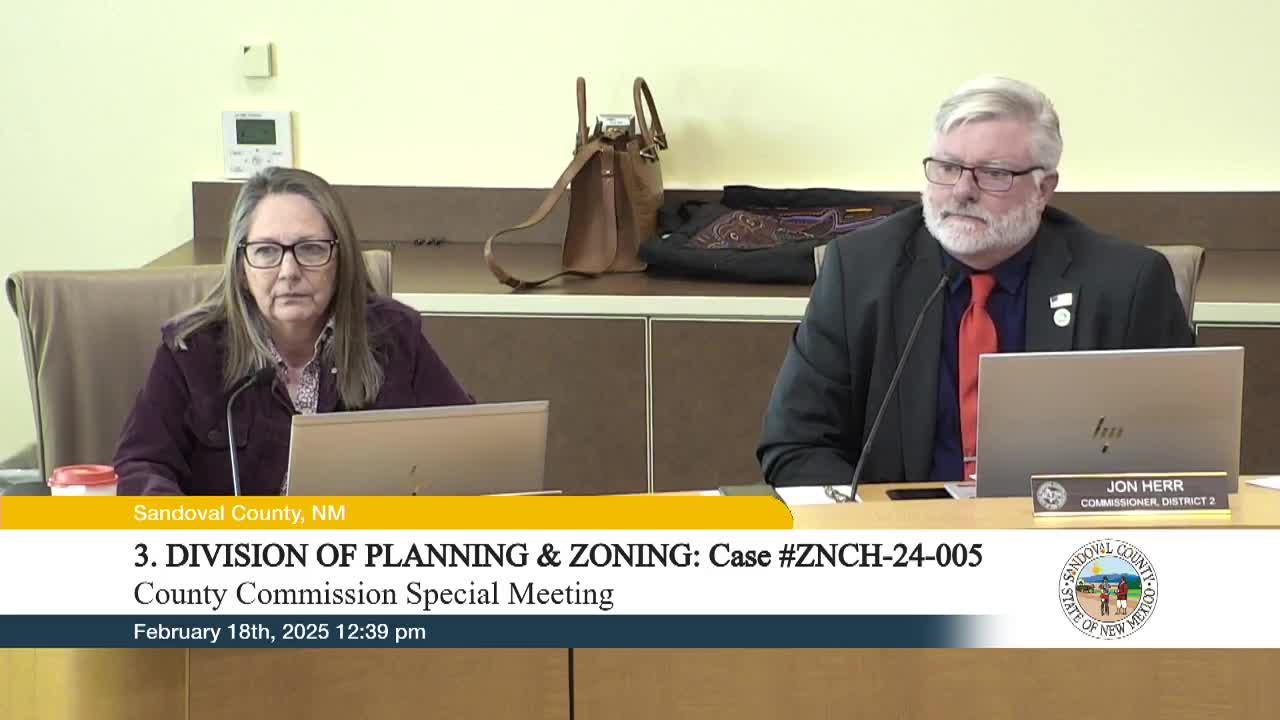Diamond Tail Ranch aims for water conservation amid economic challenges
February 18, 2025 | Sandoval County, New Mexico
This article was created by AI summarizing key points discussed. AI makes mistakes, so for full details and context, please refer to the video of the full meeting. Please report any errors so we can fix them. Report an error »

During a recent Sandoval County Commission meeting, discussions centered on the challenges faced by local ranchers, particularly those managing Diamond Tail Ranch. Rock Hardt, the ranch manager, articulated the pressing need for ranches to adapt in order to survive economically. He emphasized that traditional cattle ranching is no longer a viable source of income, prompting ranch owners to explore alternative revenue streams.
Hardt explained that one of the primary objectives for ranch owners is to utilize funds for conservation efforts. A significant concern in New Mexico is the proliferation of invasive plant species such as tamarisk, salt cedar, and Russian olive. These plants consume substantial amounts of water, which is critical for the region, particularly the Rio Grande Valley. By addressing this issue, ranchers aim to improve water availability, which could benefit the entire Rio Grande Aquifer.
The discussion highlighted the broader implications of ranching practices on local ecosystems and water resources. Hardt noted that the efforts to eliminate invasive species could lead to a substantial increase in water flow, potentially saving tens of millions of gallons annually. This initiative not only supports the ranchers' economic survival but also contributes positively to environmental conservation in the area.
As the meeting concluded, it was clear that the challenges faced by ranchers are intertwined with broader environmental concerns. The commission's support for such conservation efforts could play a crucial role in sustaining both the agricultural community and the natural resources of Sandoval County. Future discussions may further explore how local policies can facilitate these necessary changes for ranchers and the environment alike.
Hardt explained that one of the primary objectives for ranch owners is to utilize funds for conservation efforts. A significant concern in New Mexico is the proliferation of invasive plant species such as tamarisk, salt cedar, and Russian olive. These plants consume substantial amounts of water, which is critical for the region, particularly the Rio Grande Valley. By addressing this issue, ranchers aim to improve water availability, which could benefit the entire Rio Grande Aquifer.
The discussion highlighted the broader implications of ranching practices on local ecosystems and water resources. Hardt noted that the efforts to eliminate invasive species could lead to a substantial increase in water flow, potentially saving tens of millions of gallons annually. This initiative not only supports the ranchers' economic survival but also contributes positively to environmental conservation in the area.
As the meeting concluded, it was clear that the challenges faced by ranchers are intertwined with broader environmental concerns. The commission's support for such conservation efforts could play a crucial role in sustaining both the agricultural community and the natural resources of Sandoval County. Future discussions may further explore how local policies can facilitate these necessary changes for ranchers and the environment alike.
View full meeting
This article is based on a recent meeting—watch the full video and explore the complete transcript for deeper insights into the discussion.
View full meeting
